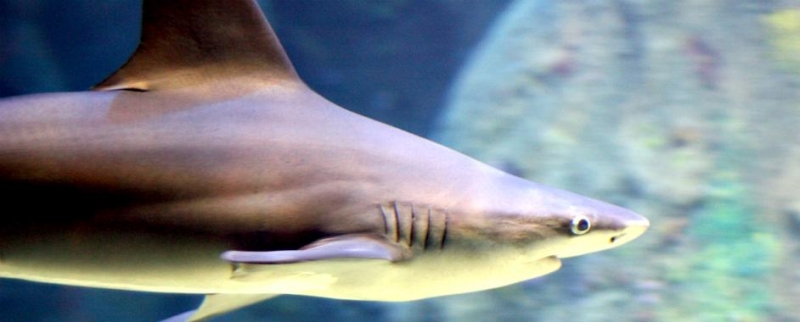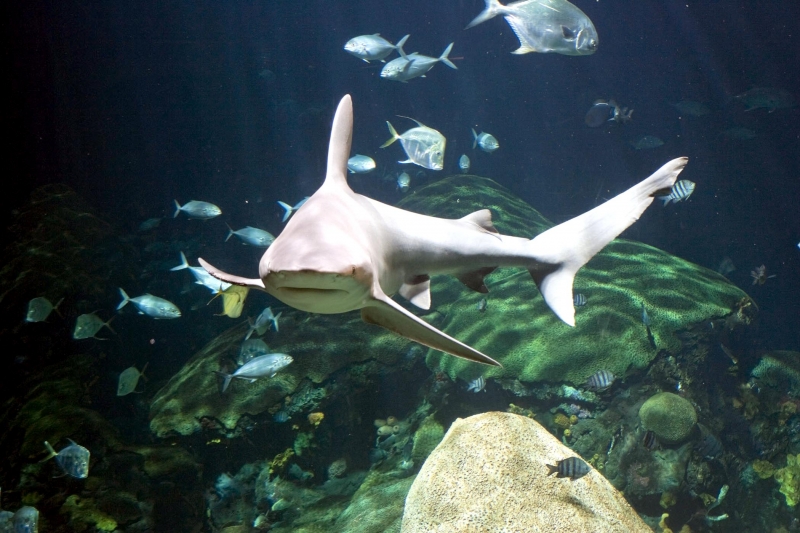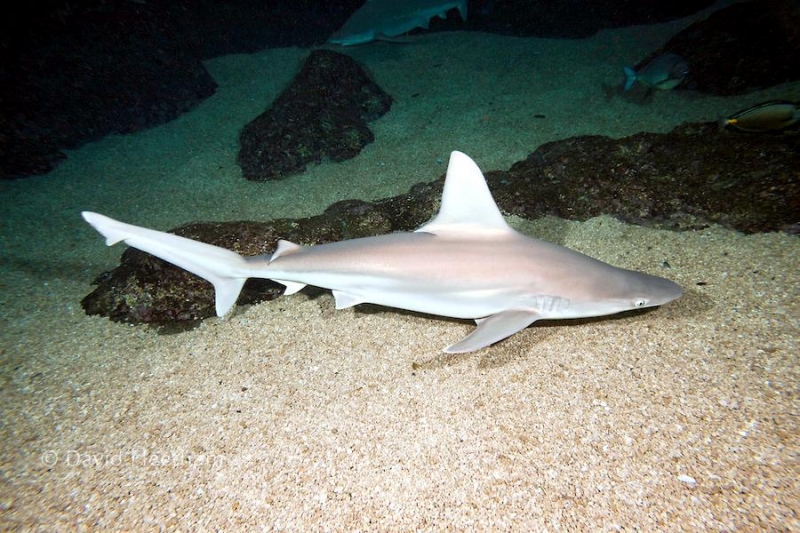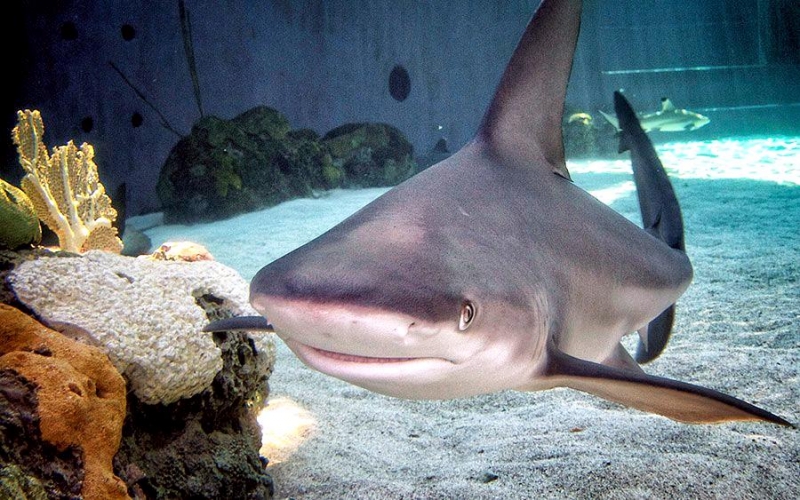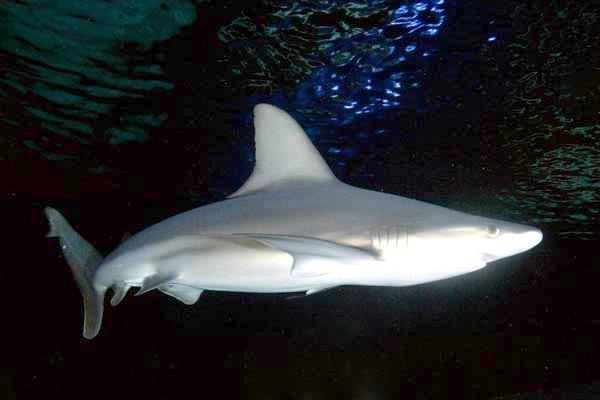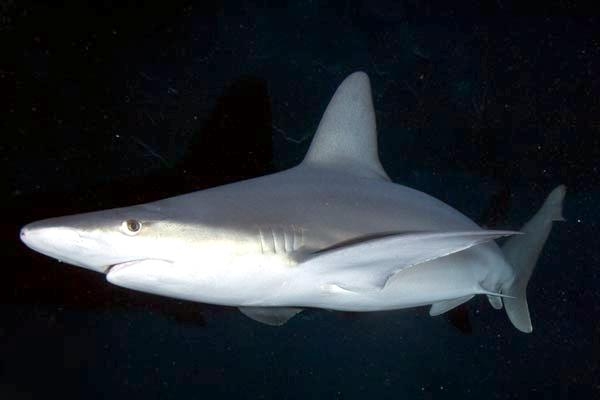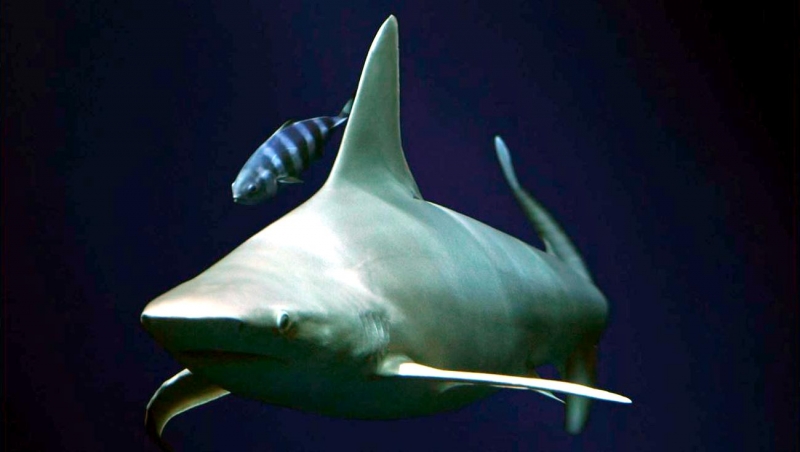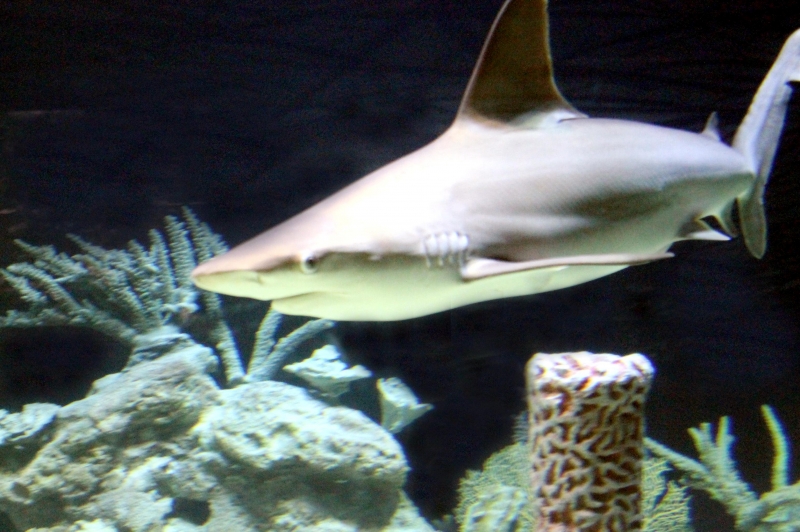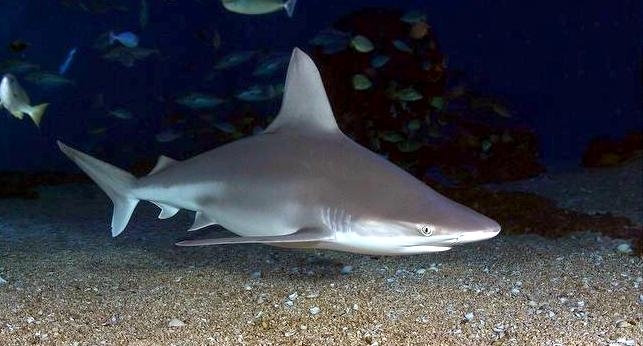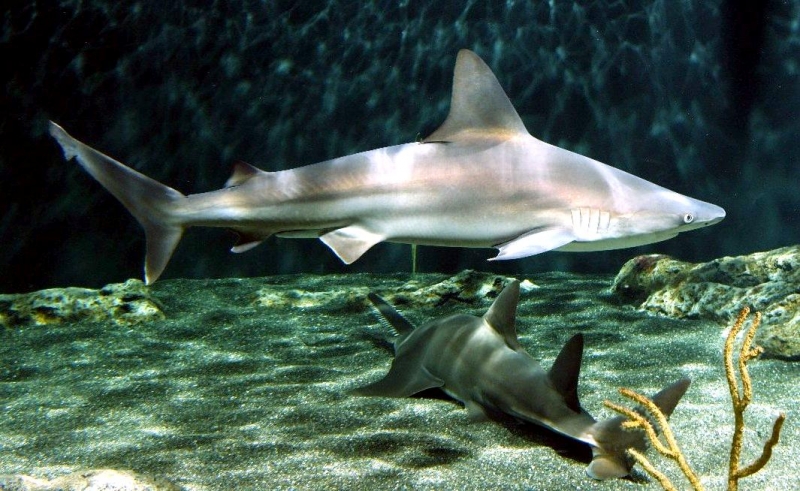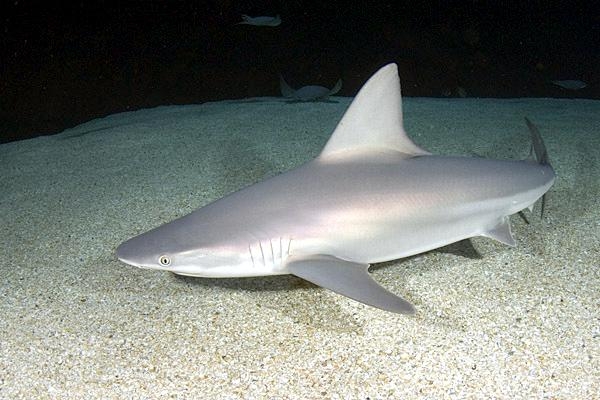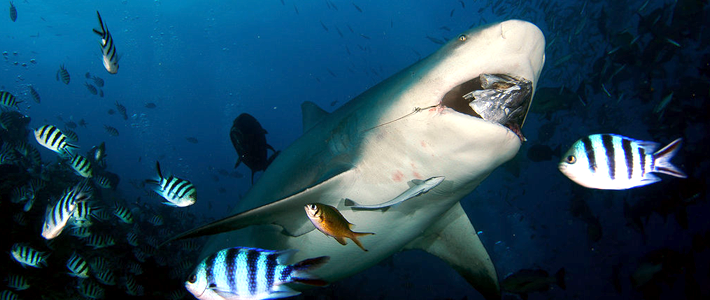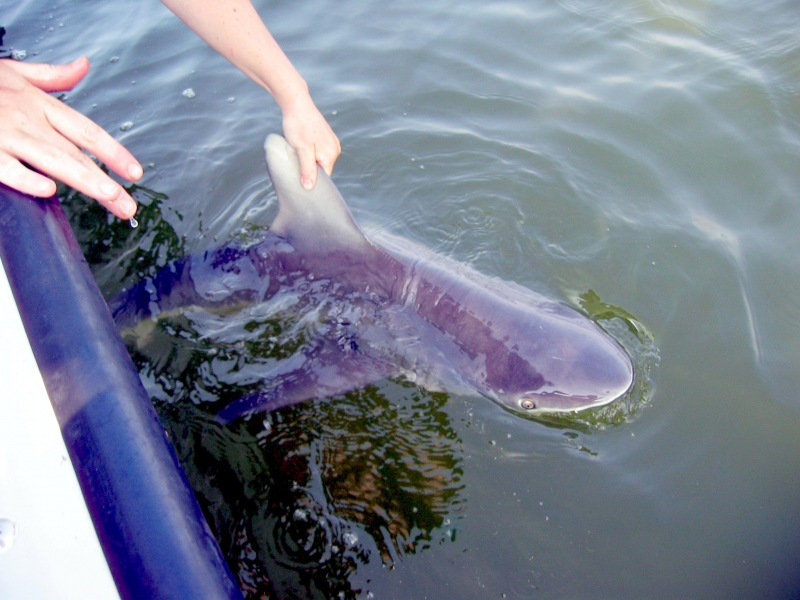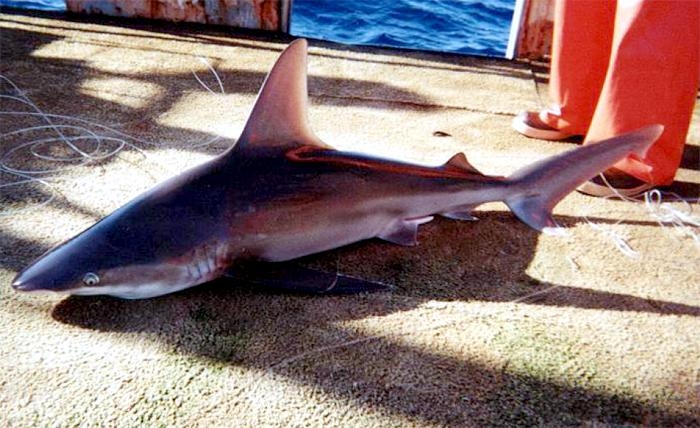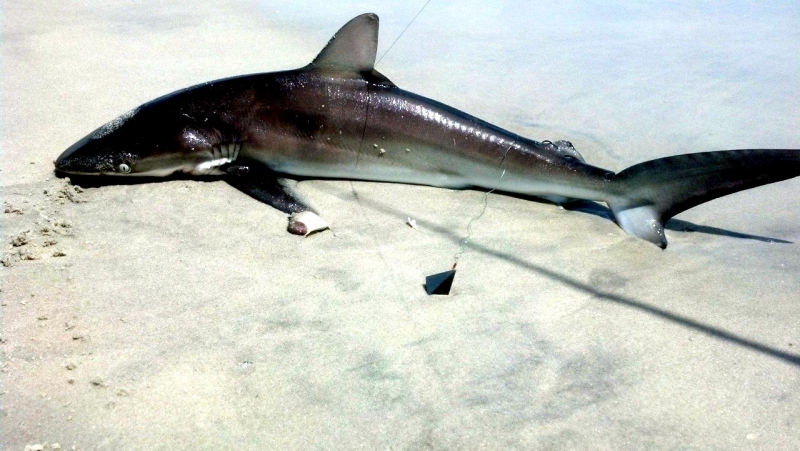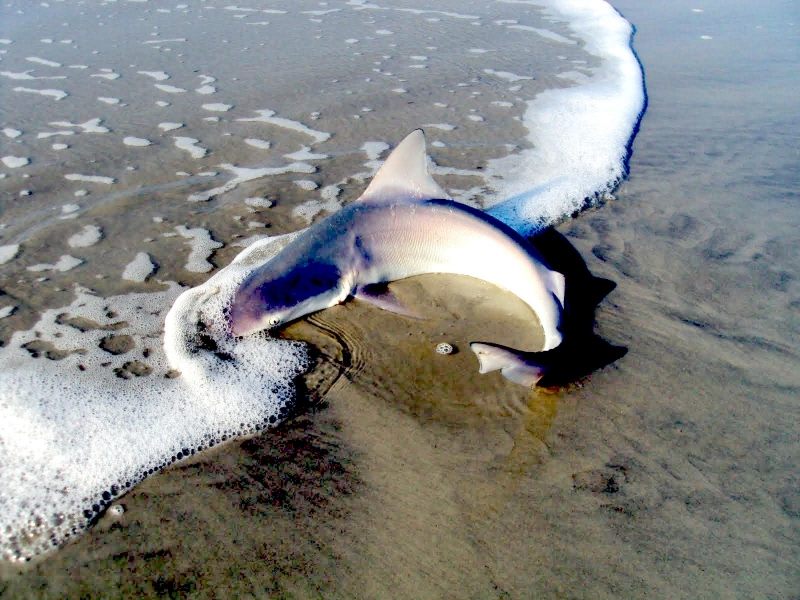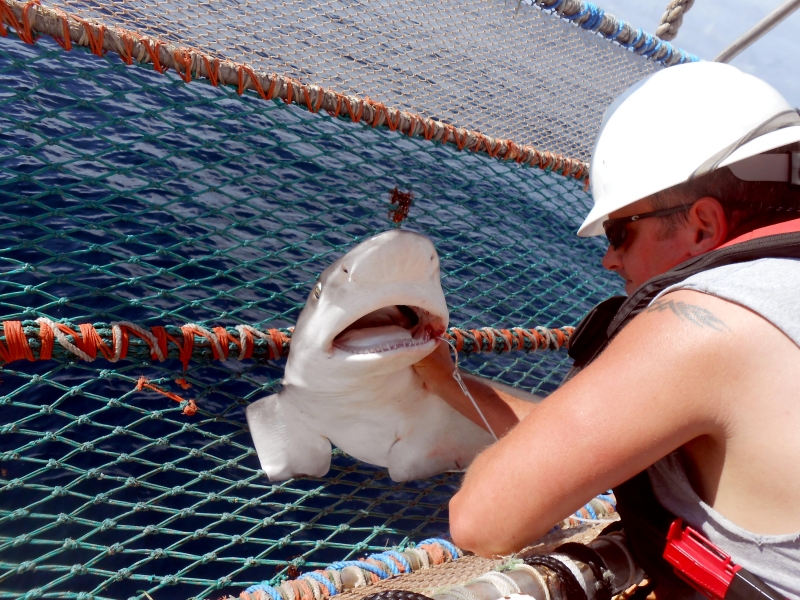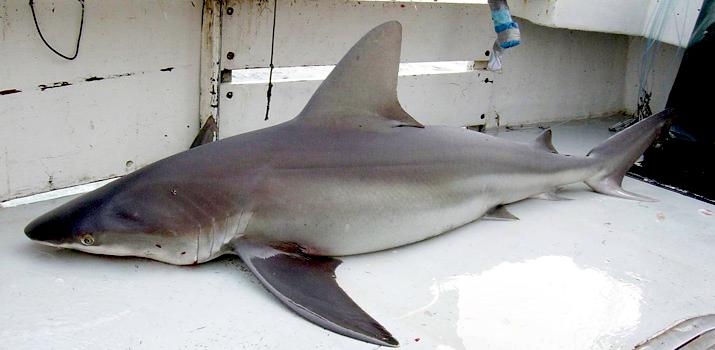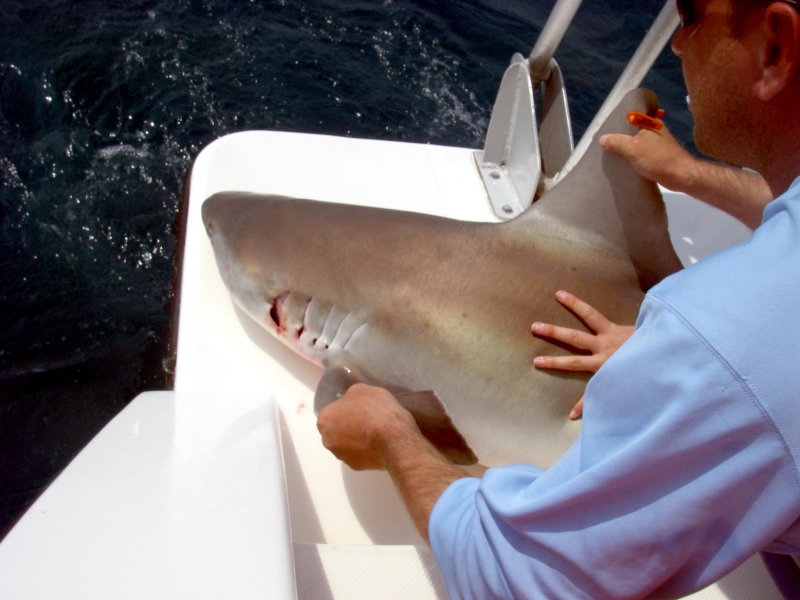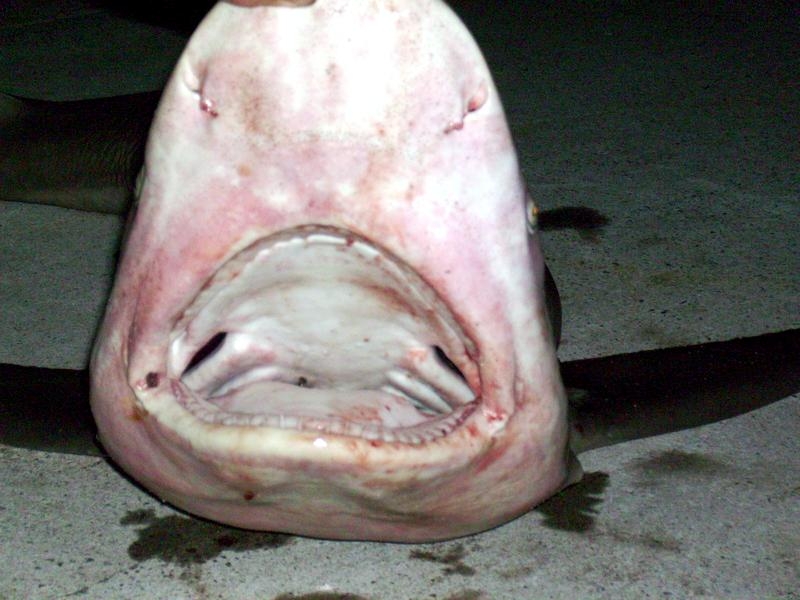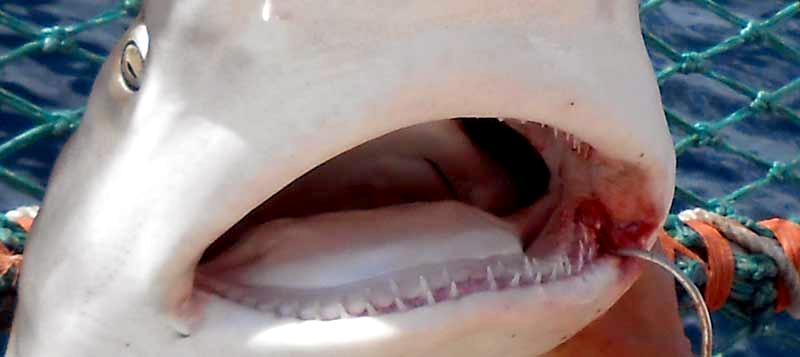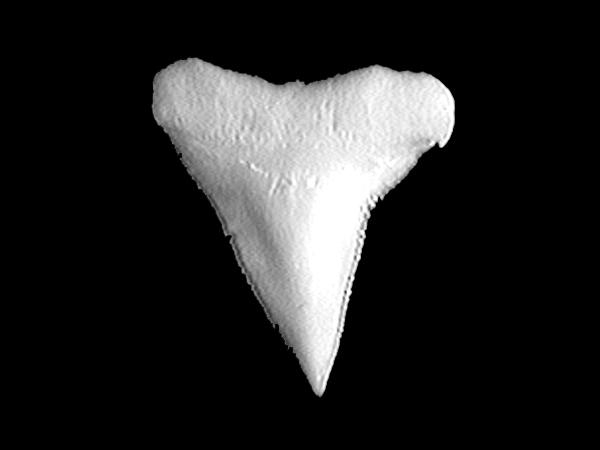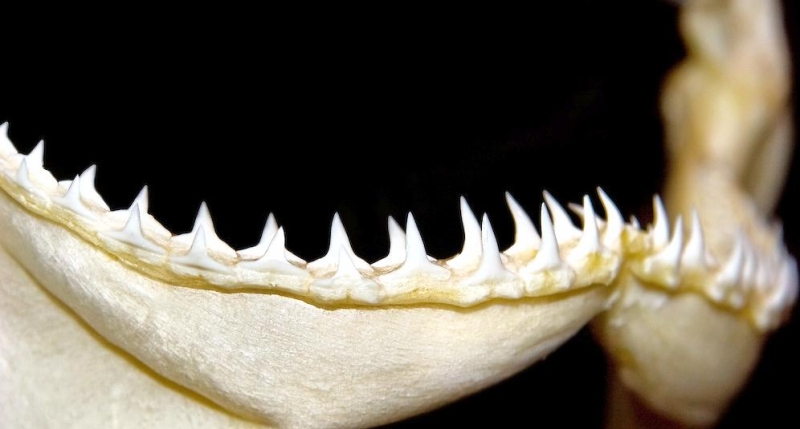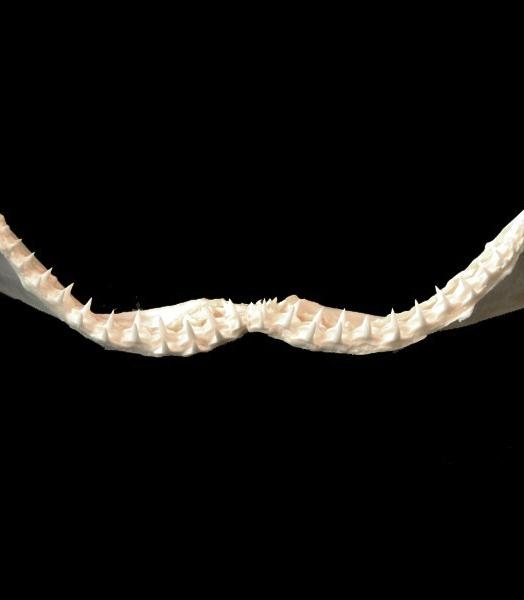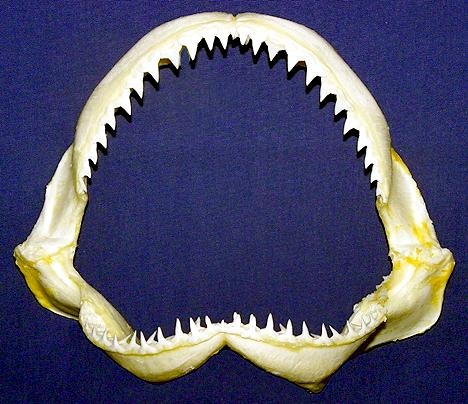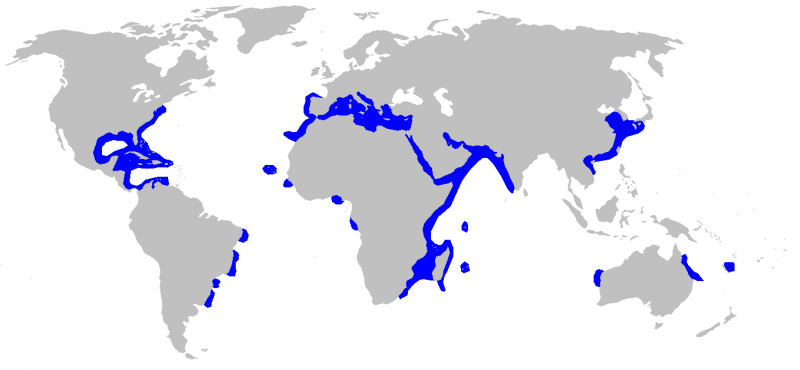“Carcharhinus plumbeus”
The Sandbar Shark gets its common name from the sandy and muddy flats, bays & estuaries in which it’s found is also known as the Brown Shark. They are moderately large sharks that measure up to 2.5 meters in length, 2 meters on average and weigh a maximum of 118 kilograms. Sandbar Sharks can weigh anywhere between 45-90 kilograms as adults. The average is 50 kilograms for males and 68 kilograms for females. Sandbar Sharks are stout sharks with moderately long, round snouts and high, triangular, saw-edged upper teeth. This species has an inter-dorsal ridge and a distinctively large first dorsal fin. Sandbar Sharks are blue-gray or brown to bronze in color on the dorsal side & flanks and white on the ventral side. The tips and outer margins of their fins are sometimes darker than the rest of their body. Sandbar Sharks can be found in subtropical waters ranging from 23-27° C in temperature between 44°N-36°S in the western Atlantic from southern Massachusetts, USA to southern Brazil; in the Gulf of Mexico, Bahamas, Cuba and south & west Caribbean. In the eastern Atlantic, Sandbar Sharks are found from Portugal to Democratic Republic of the Congo and the Mediterranean. The Indo-Pacific range of this species includes scattered records from the Red Sea, Persian Gulf and East Africa to the Hawaiian Islands and in the eastern Pacific in the Revillagigedo and Galápagos islands.
Sandbar Sharks are found in inshore & offshore waters, on continental & insular shelves as well as in deep water. This species is also common in bays, river mouths and harbors; however it avoids the surf zone & beach areas. It spends most of the time in water from 20-65 meters deep but undoubtedly moves into deeper water to undergo migration. Sandbar Sharks are opportunistic bottom-feeders that prey on bony fishes, smaller sharks, rays, cephalopods, gastropods, crabs and shrimps. Sandbar Sharks feed throughout the day but becomes more active at night. Sandbar Sharks are viviparous, meaning the embryo develops and receives nourishment via a placental sac in the mother who bears the young live rather than in eggs. Males reach maturity between 1.30-1.80 meters while females mature at 1.45-1.80 meters. Pups range from 55-70 centimeters long at birth. In the northern hemisphere, mating occurs in the spring or early summer (May-June). Sharks in the southern hemisphere mate during the warmer summer months between late October to January. The mating process begins when the male follows a female, occasionally biting her between the dorsal fins until she gives him access to insert one clasper into the cloaca.
As with other shark species, females are often seen with permanent scars as a result of this mating ritual. Once fertilization occurs, the gestation period ranges 8-9 months in the western Atlantic population where pups are born between June-August, 12 months for females inhabiting the coast of southeastern Africa where pups are born between December to February. Litter size varies by region, but is typically between 6-13 pups depending on the size of the mother. Females give birth in shallow water nursing grounds where they are protected from predation by larger sharks known to prey on juvenile Sandbar Sharks. Bays & estuaries between Delaware and North Carolina off the US coast are common Sandbar Shark nurseries. Juveniles remain in or near the nursing grounds until late fall after which they form schools and migrate to deeper waters. They return to the nursing grounds during warmer months. They repeat this migratory pattern until they are about 5 years of age when they begin to follow the wider migrations of adults.
